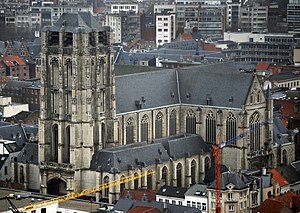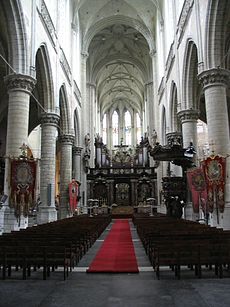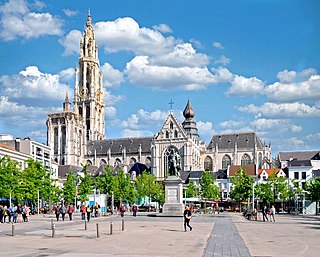
The Cathedral of Our Lady is a Roman Catholic cathedral in Antwerp, Belgium. Today's seat of the Diocese of Antwerp started in 1352 and, although the first stage of construction was ended in 1521, has never been 'completed'. It was constructed in the Gothic style by architects Jan and Pieter Appelmans. It contains a number of significant works by the Baroque painter Peter Paul Rubens, as well as paintings by artists such as Otto van Veen, Jacob de Backer and Marten de Vos. The cathedral is the largest Gothic church in Belgium, with its tower rising 123 meters over the city.

The Van de Werve family is one of the oldest Belgian noble families from Antwerp that is still in existence.

The House of Ursel is the name of an old Belgian noble family of German origin. The Head of the House is styled as Duke of Ursel, while other members are styled as Count/Countess of Ursel.

HelenaFourment was the second wife of Baroque painter Peter Paul Rubens. She sat for a few portraits by Rubens, and also modeled for figures in Rubens' religious and mythological paintings.

The Rockox Triptych or Epitaph of Nicolaas Rockox and His Wife Adriana Perez is a triptych painted by the Flemish painter Peter Paul Rubens between 1613 and 1615. It is in the collection of the Royal Museum of Fine Arts Antwerp.

St. Walburga Church or Burchtkerk was a Roman Catholic parish church in Antwerp, modern-day Belgium. It was demolished in 1817.

The House of Schetz or Schetz de Grobbendonk, originally House von Schetzenberg is a German Noble House. Most famous is the Flemish branch named Schetz, one of whose members became the first duke of Ursel.

Ladislaus / Lanseloet', sometimes Lanschot van Ursele or Lancelot II of Ursel (1499–1573), Knight, was Mayor of Antwerp.
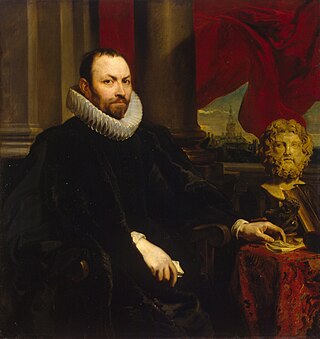
The Snijders&Rockox House is a museum in Antwerp, Belgium. It is located in two neighbouring townhouses formerly owned by the artist Frans Snyders (1579–1657) and the mayor Nicolaas Rockox (1560–1640). It is owned by KBC Bank and showcases a collection of 16th and 17th century Flemish art.

The Goubau family was an important noble family of Antwerp, many of its members are related to other important families.

Nicolaas Rockox (1560–1640), was an art patron and collector, numismatist, humanist, philanthropist and mayor of Antwerp. He was a close personal friend and important patron of Peter Paul Rubens. His residence in Antwerp was a centre where Antwerp's humanists and artists congregated and housed a large collection of artworks, antiques, rare objects and coins. It is now a museum known as the Snijders&Rockox House. He was knighted by Archduke Albert and Isabella, the Governor General of the Habsburg Netherlands.
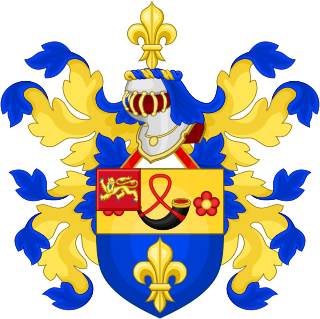
The Rubens family is a Flemish noble family that lived in Antwerp.

Nicolaas Peter Paul Rubens, Lord of Rameyen (1618–1655) was a son of the painter Peter Paul Rubens and Isabella Brant.

Alexander Joseph Rubens, Lord of Vremdyck, Willenskerk, Ter Schriek, Liesele, Malderen and steenhuffel was a Flemish noble man. He was the last male heir of his grandfather.

Jan van de Werve, Lord of Hovorst, Vierseldijk and Boechout was a member of the nobility and of the civic government of Antwerp.
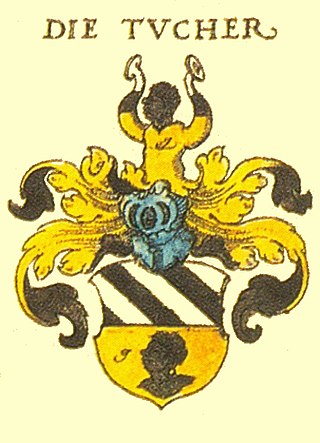
Tucher von Simmelsdorf is a noble patrician family from Nürnberg. Like the Fugger and Welser families from Augsburg, their company ran trading branches across Europe between the 15th and 17th centuries, although on a somewhat smaller scale. The Protestant family played an import part in the economical and cultural development as well as in local politics. They were admitted to the governing council of the free imperial city since 1340, a hereditary privilege, and listed in the Dance Statute. After the acquisition of Simmelsdorf Castle in 1598, the family was named Tucher von Simmelsdorf and ennobled in 1697. In 1815, they became Bavarian barons.

Hendrik de Moy was secretary of the Antwerp city council and a historian.
Lazarus Marcquis (1574–1647) was a physician in the Habsburg Netherlands.
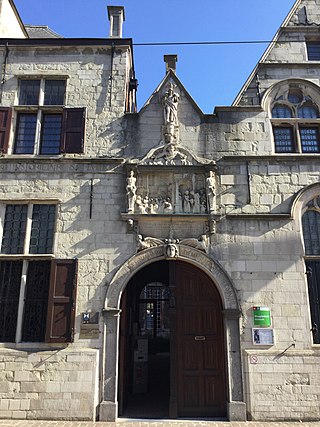
The Maagdenhuis Museum is an art museum and historical museum located in a 17th-century historic building on Lange Gasthuisstraat, Antwerp, Belgium. The building was used as an orphanage for the maegdeckens, or maidens, from the mid-16th century to the end of the 19th century. The museum presents a collection of utensils used daily by the foundlings and the orphans; a collection of antique furniture, and a series of documents relating to the orphanage and the life in it from the 16th century to 19th century.
